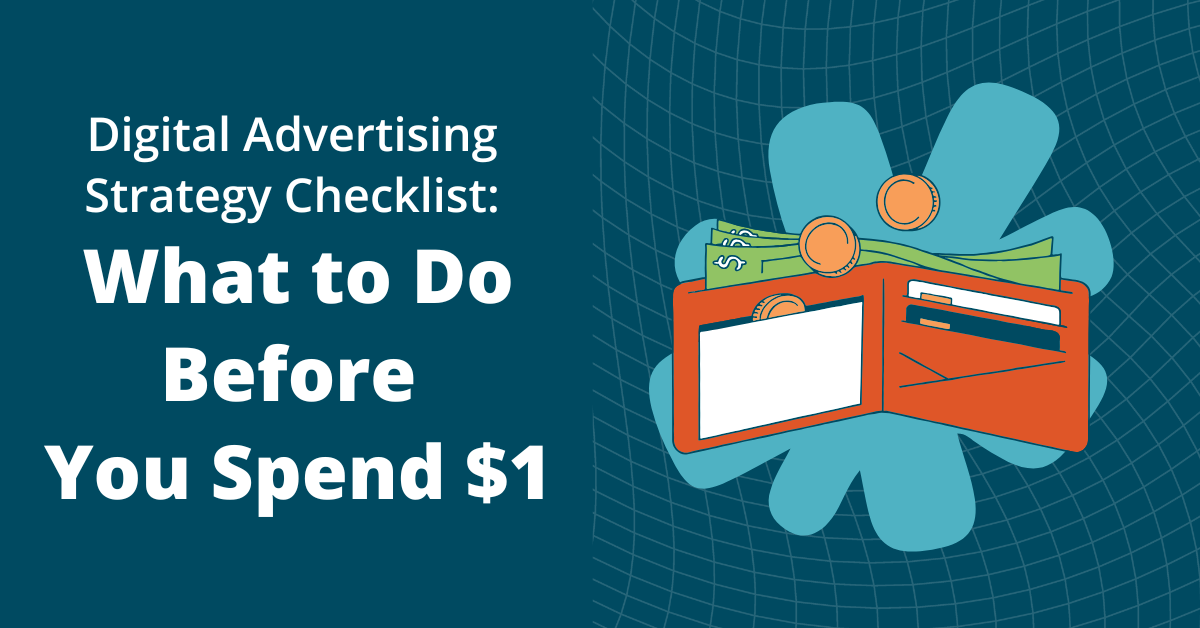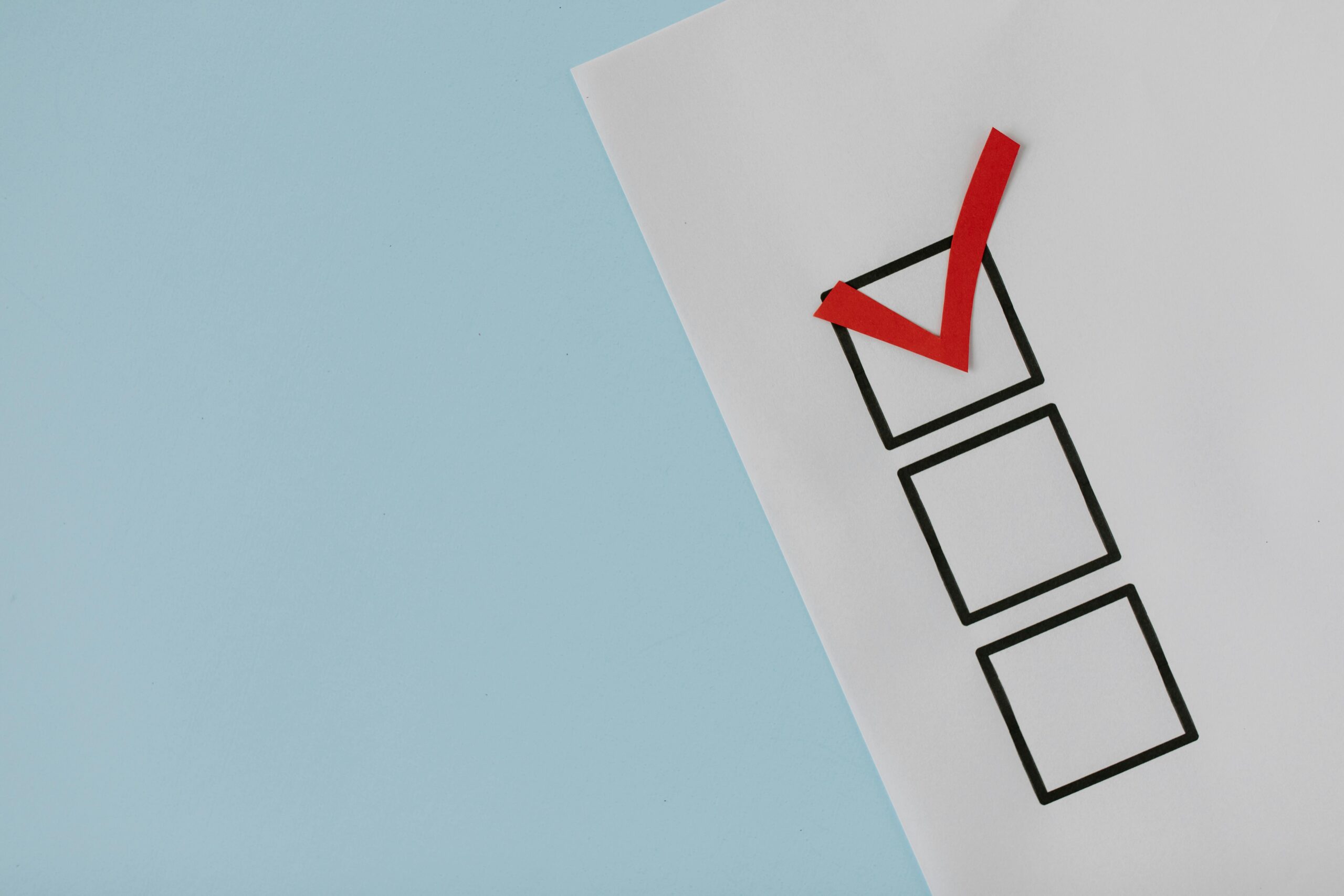Digital Advertising Strategy Checklist: What to Do Before You Spend $1
August 12th, 2025 by
Key Insights
- A paid ad campaign is only as effective as the strategy behind it. Even great creative will underperform without a defined goal, audience, and conversion path.
- Digital ads can increase brand awareness by up to 80%, but only if execution is precise. Relevance, targeting, and optimization unlock that potential.
- Success happens before launch. From audience research to tracking setup, what you do before you spend determines whether your budget drives impact or disappears.
- Landing pages, follow-up, and lead handling are make-or-break moments. Campaigns don’t just need clicks. They need infrastructure that turns attention into results.
- Partnering with the right agency brings structure, expertise, and performance insight. Like a choreographer guiding a performance, an agency keeps every element moving in sync.
A paid ad campaign isn’t just a collection of assets. It’s a well-orchestrated system. Each part, from targeting to tracking, must function in sync to drive measurable outcomes.
Before your campaign ever goes live, your digital advertising strategy should already be working behind the scenes: identifying the right audience, crafting the right message, selecting the right platforms, and preparing your brand to handle the response.
Unsure where to start? This step-by-step digital ad campaign checklist outlines everything you need to lay the groundwork.
What Is a Digital Ad Campaign Plan?
A digital ad campaign plan is a tactical blueprint that maps every part of your campaign to a specific business goal.
It connects your audience targeting, messaging, platforms, and creative assets to a single, measurable outcome, whether that’s generating leads, increasing sales, or raising brand awareness.
Without a campaign plan, brands often end up with scattered targeting, mismatched creative, and disappointing results.
Think of it like entering a dance competition without rehearsing a routine. You might have great moves, but without choreography, you’ll lose the rhythm, the audience, and the scorecard.
Ad campaign planning gives your strategy structure and flow.
Digital Ad Campaign Checklist
Step 1: Define the goal and conversion action
Every campaign should start with one question: What action do you want your audience to take?
Whether you’re aiming to generate leads, drive purchases, or boost brand visibility, choose one primary goal. Then define the conversion that reflects success. This could be a form submission, a phone call, a sale, or a demo request. Make sure your analytics tools are set up to track this action from day one.
Without a clear goal and measurement in place, you’ll have no way to judge success.
Step 2: Conduct market and audience research
Knowing your audience is the foundation of any effective digital strategy.
Collect demographic data like age, location, income, and education, but also go further. Explore psychographics such as values, interests, and buying behaviors. Analyze your competitors to find gaps in their targeting or messaging. Build detailed buyer personas so you can create ads that resonate.
The more you understand your audience, the more relevant and persuasive your campaign will be.
Step 3: Choose the right paid digital channels
Each digital platform offers different strengths. Choose the channels that match your audience and campaign goal.
If your audience is actively searching for your product, Google Ads may be the best choice. If you’re building awareness or retargeting existing prospects, social media platforms like Facebook, Instagram, or LinkedIn offer valuable reach and targeting tools. Consider where your audience spends time, how they consume content, and how different digital marketing channels handle tracking, budget, and creative.
A successful campaign starts by meeting people where they are.
Step 4: Build a targeted keyword strategy (for search campaigns)
For search campaigns, your keyword strategy controls who sees your ads and when.
Group keywords based on user intent, separating awareness-stage searches from ready-to-buy queries. Prioritize keywords with strong search volume and an acceptable cost-per-click (CPC). Use long-tail variations to attract higher-quality traffic. And build a negative keyword list to prevent your ads from showing up in irrelevant searches.
The right keyword strategy filters out noise and brings in people ready to act.
Step 5: Define audience segments (for social and interest-based campaigns)
When targeting users on platforms like Meta or LinkedIn, segmentation matters.
Break your target audience into clear, testable segments based on behaviors, interests, demographics, or past site activity. Create custom audiences from your CRM or website traffic. Use lookalike audiences to expand reach while maintaining relevance. Plan to test multiple segments to see what performs best.
The more precisely you segment, the more efficiently you’ll spend and the more likely you’ll convert.
Step 6: Develop landing pages built to convert
Your ad’s job is to spark interest. Your landing page’s job is to close the loop.
Avoid sending paid traffic to your generic homepage. Instead, create campaign-specific landing pages that reflect the ad message and guide users toward your CTA. Keep it simple: fast load time, mobile optimization, and one clear call to action.
For one of our clients, launching dedicated landing pages (without changing the ad creative or increasing spend) resulted in 42% more qualified leads and a significantly lower cost per lead. The only campaign difference was the destination.
Step 7: Set up tracking and conversion measurement
Before you launch, your tracking setup needs to be airtight.
Install all necessary tags and pixels, such as Google Tag Manager, Meta Pixel, LinkedIn Insight Tag, and others. Define conversion goals inside your analytics platform. Use consistent UTM parameters to trace traffic sources and campaign performance. Test your tracking setup thoroughly before launch.
If the campaign data is wrong, your decisions will be, too.
Step 8: Write clear, compelling ad copy
Your copy should hook attention, communicate value, and prompt action, all in just a few lines.
Write with your audience’s mindset in mind. What do they want? What do they need? Use plain language that reflects their voice and avoids fluff. Your content strategy should always prioritize strong CTAs and include testing multiple versions for performance.
The best ad copy doesn’t just sound good. It earns clicks and drives conversions.
Step 9: Design ads that match your audience and platform
Your ad creative should feel native to the platform while standing out in the feed.
Use the right format (carousel, static image, or video) and ensure consistency between your ad visuals and landing page. Adapt your aesthetic to meet audience expectations, but always stay true to your brand.
Excellent design reinforces your message and keeps users engaged all the way through the funnel.
Step 10: Plan A/B tests from the beginning
Testing isn’t something you tack on later. It’s part of the plan.
Decide what to test (copy, creative, CTA, landing page, or audience) and establish the metrics and sample sizes needed for valid results. Run structured tests and analyze outcomes at regular intervals. Then use what you learn to refine the campaign mid-flight.
A/B testing turns good campaigns into great ones.
Step 11: Align internal lead handling processes
What happens after a lead converts is just as important as getting the click.
Make sure leads are routed to the right place, like your CRM, inbox, or sales team, immediately. Train staff to follow up quickly and consistently. If you’re qualifying leads, define scoring criteria so your team knows who to prioritize.
A well-oiled lead handling process ensures your marketing efforts turn into measurable pipeline growth.
What Happens After Campaign Launch?
Going live is not the finish line. It’s the start of real optimization.
Once your campaign is in motion, ongoing performance monitoring is critical. Data from your ads, landing pages, and audience segments will show what’s working and what’s not. Use those insights to adapt early and often.
Post-launch digital advertising tips include:
- Monitoring keyword and audience engagement regularly
- Reviewing click-through and conversion rates on each
- Adjusting bids and budgets based on cost-per-result
- Promoting high-performing variants, pausing underperformers
- Iterating landing pages to improve conversion efficiency
Your goal now is to reduce waste and improve return. Campaigns that are actively managed outperform set-it-and-forget-it approaches every time. Keep refining based on performance data, and your digital advertising strategy will only get stronger.
Why Partner With a Digital Advertising Agency?
Even with the best intentions, many brands and their marketing teams stumble after launch. Maybe your ads are generating clicks, but they aren’t converting. Or you’re spending money across multiple platforms without a clear sense of what’s actually driving results.
Sometimes, despite having all the right tools in place, performance plateaus, and no one knows why.
That’s because executing a successful digital marketing strategy requires more than checklists and best practices. It takes coordination and expertise.
An experienced agency helps you:
- Align your campaign tactics with business objectives from the start
- Develop a competitive content marketing and creative strategy
- Identify and eliminate inefficiencies in targeting and bidding
- Access certified experts across platforms like Google, Meta, and LinkedIn
- Make data-driven adjustments in real time, not weeks later
- Build a scalable, repeatable strategy that evolves with your goals
Think back to the dance competition example. You can have the right stage, the right costume, and even the right audience, but without a choreographer, the performance lacks direction. A digital ad agency acts as that choreographer, bringing coordination, timing, and strategic vision to ensure every part of your campaign moves in harmony.
And when everything clicks, that’s when the real performance begins.
Digital Advertising Strategy FAQs
How effective are online advertising campaigns?
When planned and managed properly, online advertising campaigns are highly effective. Paid media allows for precise targeting, measurable results, and scalable performance across different goals, from lead generation to sales to brand awareness. Overall strategy success depends on aligning platform, messaging, and audience with a clearly defined conversion goal.
What’s the difference between paid search and paid social advertising?
Paid search targets users based on their intent, making it ideal for capturing active demand. Paid social reaches users based on demographics, interests, and behaviors, even when they’re not actively searching. Depending on your audience and overall campaign objectives, both can play a role in an effective digital marketing strategy.
How do you optimize ad spending?
Ad spend is optimized through ongoing analysis and adjustment. This includes refining audience or keyword targeting, rotating creatives, adjusting bids based on performance, and improving landing pages to increase conversion rates. Optimization is not a one-time task. It requires continuous testing, measurement, and iteration.
What are the best practices for digital ad tracking setup?
Well-executed tracking is a strong foundation for any digital marketing campaign. Set clear conversion goals, implement tags and pixels correctly, and use UTM parameters for clean reporting. Accurate tracking ensures your ad efforts are evaluated based on reliable data, allowing for better optimization.
What does ad campaign success look like?
Ad campaign success means achieving measurable outcomes tied to your strategy, whether that’s clicks, conversions, or revenue. High click-through rates, low cost per acquisition, and positive ROI all point to a well-executed digital marketing plan. Ongoing performance analysis helps refine your strategy and improve future campaign effectiveness.
Build Smarter Campaigns From the Start
Digital ads have the power to increase brand awareness by up to 80%, but only when they’re built on a solid strategy. Too often, businesses invest in paid advertising without the structure or support to turn clicks into real outcomes.
That’s where execution matters.
Since 2006, Search Influence has helped organizations do digital advertising the right way. As a Google Premier Partner, we combine platform expertise with performance-driven thinking to deliver campaigns that convert, scale, and adapt.
If you’re ready to stop wasting budget and start building a smarter, more efficient digital advertising strategy, we’re ready to help. Let’s start the conversation today.




